
Is Honey on the Keto Diet? The Sweet Truth 2025
Is Honey on the Keto Diet? The Sweet Truth 2025 Curious whether you will be able to drizzle that golden honey on your keto meals in 2025? Are you on a ketogenic diet and you miss sweetness in your life? You are not alone. This guide dissects the truth about honey and keto compatibility to anyone who wants to stay in ketosis and satisfy their sweet tooth. We will discuss the carbohydrate content in honey that influences ketosis, find out about keto-friendly sweetener options that will be popular in 2025, and provide clever tips on how to indulge in honey every now and then without ruining your low-carb efforts.
Understanding the Keto Diet Fundamentals
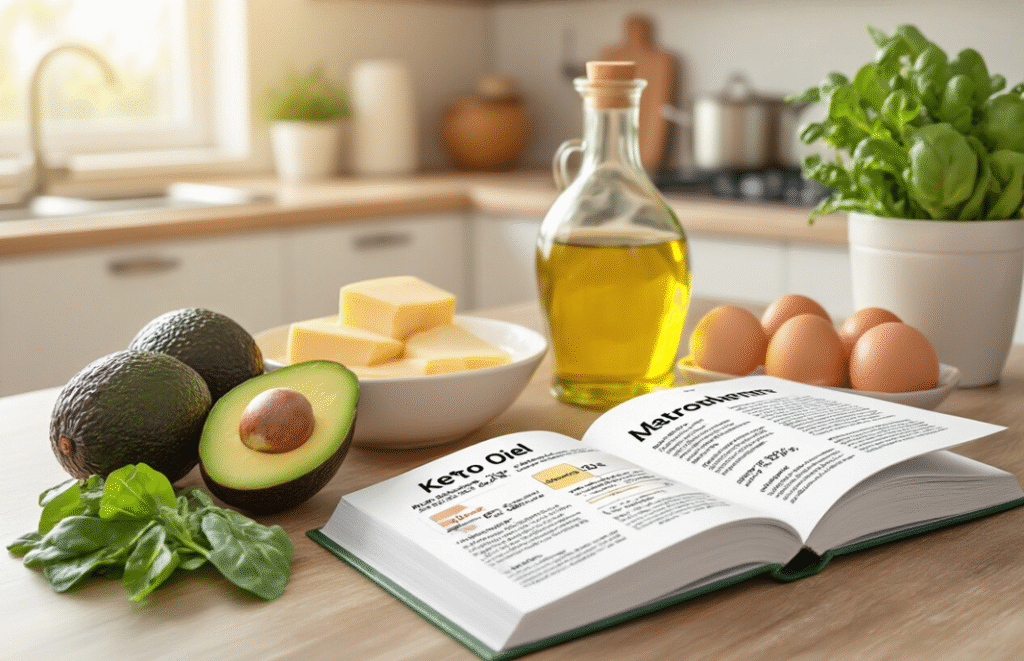
Important Ketosis Principles
The keto diet is not a new fad diet, but a metabolic state changer. When you cut those carbs down to 20-50g per day, something incredible happens in your body. It becomes depleted of glucose and exclaims, “I need a new source of fuel!” It then begins to burn fat instead.
This fat-burning condition? That’s ketosis. Your liver converts fat into ketones, which your brain and body utilize as energy. Cool, huh? It typically requires 2-7 days of severe carb restriction to enter ketosis. You will feel it when your breath becomes a little fruity (sorry, it does) and your energy levels even out.
Macronutrient Ratios for Optimal Results
The classic keto breakdown looks something like this:
| Macronutrient | Percentage of Daily Calories |
| Fat | 70-80% |
| Protein | 20-25% |
| Carbs | 5-10% |
This isn’t just random numbers. Too much protein? Your body converts it to glucose through gluconeogenesis. Too many carbs? You’ll kick yourself out of ketosis. Many keto beginners mess up by focusing only on cutting carbs without upping their fat intake. Remember – fat is your friend on keto!
How Sugar Affects Ketosis
Sugar is basically keto kryptonite. Just a spoonful can derail your progress. When you eat sugar, your body immediately:
Spikes insulin
Stops fat burning
Prioritizes using that quick sugar for energy
Kicks you out of ketosis
Your body loves using carbs for energy because it’s easy. Why would it bother with the complex process of burning fat when there’s glucose readily available? This is why even natural sugars – including those found in honey – can be problematic. Your body doesn’t care if that sugar came from a candy bar or a “natural” source – the metabolic response is essentially the same.
Honey Nutrition Profile: The Facts You Need
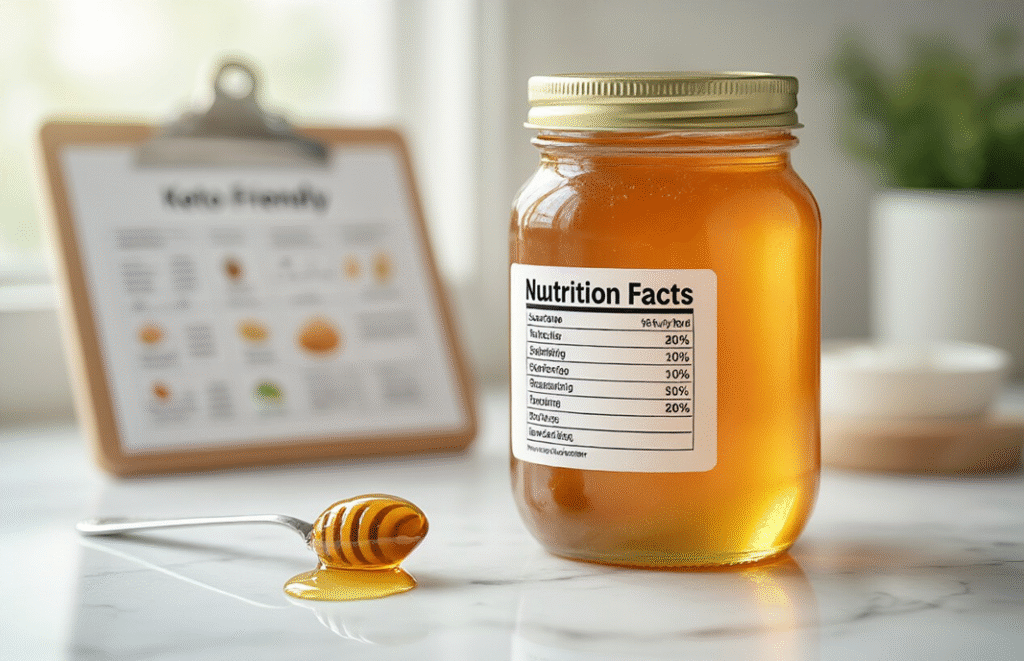
A. Carbohydrate Content in Different Honey Varieties
Honey’s not all created equal when it comes to carbs, which is crucial info for keto dieters counting every gram. Raw honey typically contains about 17g of carbs per tablespoon, with nearly all of those being simple sugars.
Here’s how different honey varieties stack up:
| Honey Type | Net Carbs (per tbsp) |
| Clover | 17.3g |
| Manuka | 16.9g |
| Buckwheat | 17.1g |
| Acacia | 16.5g |
| Wildflower | 17.2g |
That’s a pretty hefty carb load when your daily keto target is typically 20-50g total.
B. Glycemic Index Comparison with Other Sweeteners
The glycemic index (GI) measures how quickly a food raises blood sugar. For keto success, lower is better.
| Sweetener | Glycemic Index | Carbs per tbsp |
| Honey | 58-63 | 17g |
| Table Sugar | 65 | 12.6g |
| Sweetener | Glycemic Index | Carbs per tbsp |
| Maple Syrup | 54 | 13g |
| Erythritol | 0 | 0g |
| Monk Fruit | 0 | 0g |
| Stevia | 0 | 0g |
Honey sits right in the middle – better than white sugar but miles away from keto-friendly alternatives with zero impact.
C. Raw Honey Good Compounds
Raw honey is not sugar water. It has bioactive compounds that processed sweeteners do not have:
Antioxidants: Contains flavonoids and phenolic acids
Enzymes: Natural digestive aids like amylase
Vitamins & Minerals: Small amounts of B vitamins, potassium, and zinc
Antimicrobial properties: Natural hydrogen peroxide producers
These advantages may be alluring, but keep in mind, they are accompanied by those keto-busting carbs.
D. Caloric Impact on Daily Keto Allowances
One tablespoon of honey contains approximately 64 calories and 17g of carbs. It may not seem like a lot, but it can destroy your macros in a second.
On a standard keto diet where:
70-75% of calories come from fat
20-25% from protein
Only 5-10% from carbs
That one tablespoon may symbolize:
68-85 percent of your daily carbohydrate allowance (20g limit)
34-42 percent of your daily carbohydrate allowance (on a 40g limit)
The numbers don t lie – honey is a carb bomb that most keto dieters just can not afford in their daily allowances.
Can Honey Fit Into a Ketogenic Lifestyle?
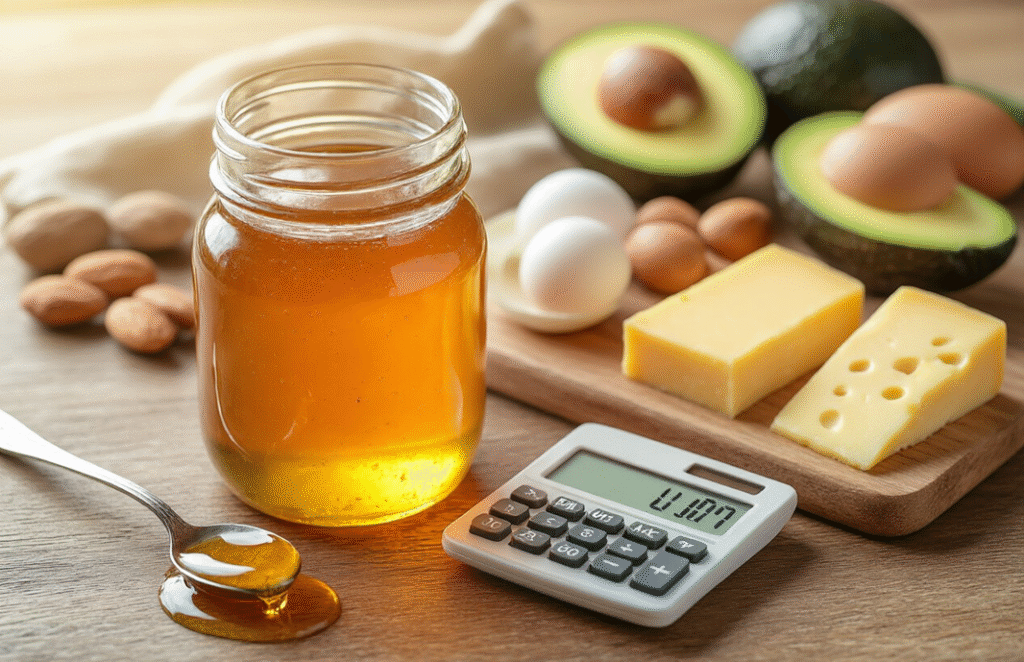
Small-Dose Approach for Honey Consumption
The strict answer? Honey isn’t keto-friendly. But the real world isn’t black and white. Some keto followers adopt what I call the “teaspoon approach” – using tiny amounts of honey as a treat rather than a staple. Think: a quarter teaspoon stirred into tea or drizzled on keto-friendly yogurt.
This works because when consumed in minimal amounts (under 5g), honey might not kick you out of ketosis completely if:
You’re fat-adapted (been keto for 6+ weeks)
You stay under 20g total carbs elsewhere in your day
You consume it alongside fat to slow absorption
I’ve seen clients measure their ketones before and after this micro-dosing approach, and many maintain ketosis. Your mileage may vary though – everyone’s metabolism responds differently.
Timing Honey Intake for Minimal Impact
Timing matters enormously. The worst time to have honey? First thing in the morning on an empty stomach. Instead, consider having that tiny bit of honey:
Right before a workout (your muscles will use the quick glucose)
After intense exercise during your recovery window
As part of a higher-fat meal (the fat slows carb absorption)
The goal is to avoid blood sugar spikes that might interrupt ketosis for hours.
Who Should Completely Avoid Honey on Keto
Some people shouldn’t play around with honey at all on keto:
Keto newbies in their first 6-8 weeks (you’re not fat-adapted yet)
Those doing therapeutic ketogenic diets for medical conditions
People who struggle with sugar cravings (honey can trigger more cravings)
Diabetics managing blood glucose levels
Anyone who finds small amounts lead to binges
The harsh truth? If you’re doing keto for weight loss and struggle with moderation, that “just a taste” might derail your progress more through psychological triggers than the actual carb count. Bottom line: honey isn’t keto, but some veterans can incorporate micro-amounts strategically. Be honest about whether you’re one of them.
Honey Alternatives for Keto Dieters in 2025
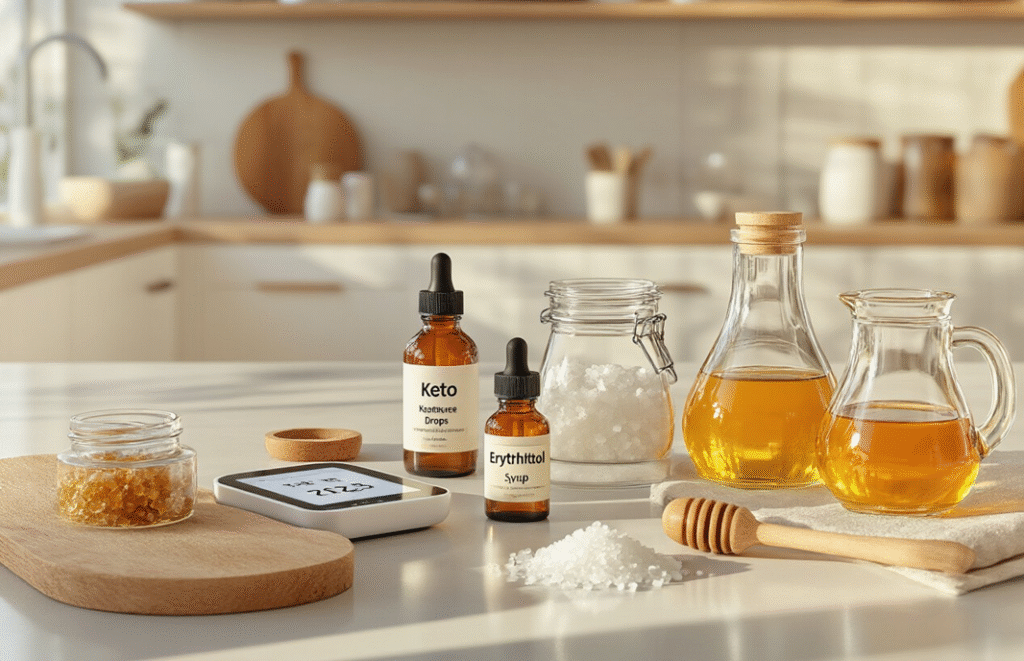
Latest Low-Carb Natural Sweeteners
Keto dieters in 2025 have more natural sweetener options than ever. Monk fruit extract has emerged as the top choice, with new concentrated forms offering 200-300 times the sweetness of sugar with zero carbs. Allulose has become mainstream too – it’s about 70% as sweet as sugar, doesn’t spike blood sugar, and now comes in convenient baking blends.
Stevia has improved dramatically. Gone are the bitter aftertastes that plagued earlier versions. The latest extract formulations involve the use of only certain sweet compounds of the stevia leaf, producing a clean sweetness that is ideal in beverages.
Raw yacon syrup has become a popular prebiotic sweetener with only 3g net carbs per tablespoon, which is high in strict keto but manageable in more lenient low-carb diets.
Creative Keto-Friendly Honey Alternatives
The 2025 honey alternatives are mind-blowing. Unbelievable has developed a fiber-based honey substitute that contains just 1g net carbs per tablespoon and actually drizzles and crystallizes like real honey. A number of companies have begun selling keto honey, which is a mixture of monk fruit, allulose, and natural flavors that replicate the floral flavor of honey. These products are the essence of honey without the sugar load.
Chicory root honey substitutes offer that golden color and thick texture with the added benefit of prebiotics and only 2g net carbs per serving.
Taste Comparison Guide
| Sweetener | Sweetness Level | Aftertaste | Best Uses |
| Monk Fruit | Very High | None | Beverages, no-bake |
| Allulose | Moderate | None | Baking, caramelizing |
| Stevia | Very High | Slight in some brands | Drinks, yogurt |
| Keto Honey | Moderate | None | Tea, drizzling |
| Chicory Honey | Mild | Slight earthiness | Baking, toast |
Best Baking vs. Beverage Options
For baking, allulose reigns supreme. It browns, caramelizes, and provides moisture like sugar does. The newest allulose-monk fruit blends maintain stability even at high temperatures.
Cold beverages? Liquid monk fruit extract dissolves instantly without the cooling effect that erythritol can produce. For hot drinks like tea, the new honey alternatives designed specifically for dissolution in heat work perfectly without any strange aftertaste.
Sweet sauces and glazes work best with the thicker consistency of allulose syrups or chicory-based honey alternatives, which cling to food rather than sliding off.
Cost Analysis of Popular Alternatives
Monk fruit remains pricier than other options, averaging $1.25-1.75 per ounce of liquid concentrate in 2025. However, a little goes an extremely long way. Allulose has also become significantly cheaper, falling to about 6-7 dollars per pound in 2022, compared to 12 dollars per pound in 2020, making it the most cost-effective baking ingredient.
The specialty honey alternatives cost premium dollars – typically $9-14 for an 8oz jar – but they’re specially formulated for the honey experience, not just sweetness. Stevia remains the budget-friendly option at roughly $0.80-1.00 per ounce of liquid concentrate, with improved taste profiles justifying slight price increases over older versions.
Strategic Ways to Enjoy Honey While Staying in Ketosis
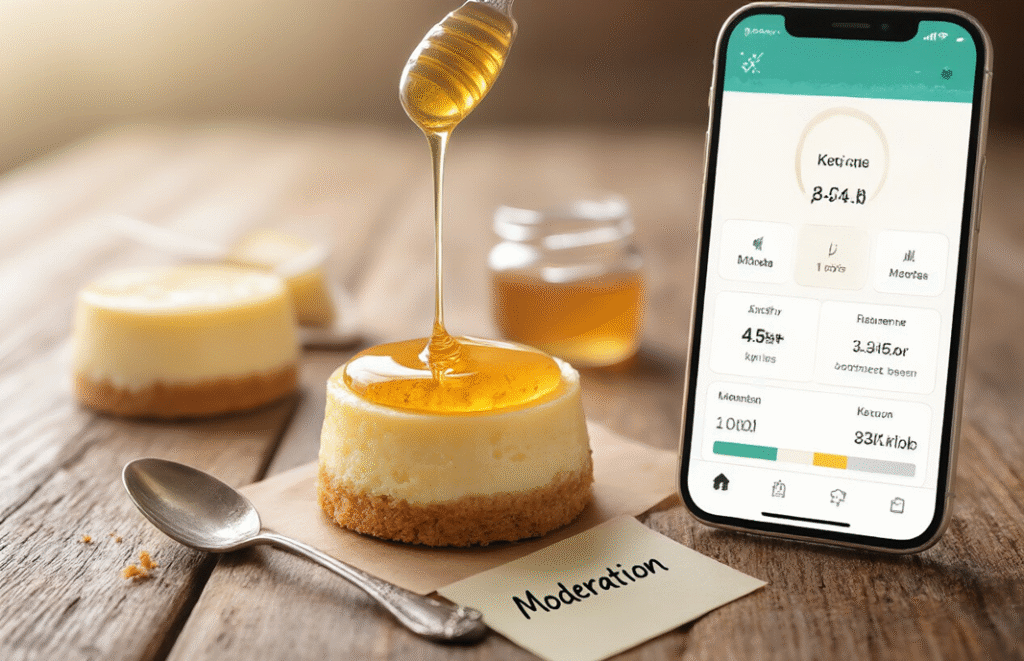
Pre-Workout Honey Micro-Dosing Technique
Wish you could have your honey and be in ketosis as well? Your solution may be micro-dosing before workouts. The thing is, timing is everything. Consuming 1-2 teaspoons of raw honey 15-30 minutes before a vigorous workout provides your body with the right amount of glucose to get you through without putting you out of ketosis altogether. Your muscles will snatch that fast energy to perform, and you will probably burn those carbs before they can do any metabolic mischief. This is particularly effective during high-intensity interval training or heavy lifting where your body is in need of quick energy.
This trick is sworn by many keto athletes. They experience improved performance without the post-exercise crash that may occur when running on ketones alone. The key? Make it small and strategic – we are not talking about a drizzle of honey on your pre-workout snack, but a measured teaspoon.
Cyclical Keto Methods of Honey Inclusion
Strict keto is not the only game in town. Cyclical keto (or carb cycling) provides ideal opportunities to consume honey without ruining your progress. The method is simple: eat regular keto (20-25g carbs) 5-6 days, then have a controlled carb refeed (75-150g) 1-2 days. These are the days with more carbs, and it is good to add some honey.
This rhythm is effective because:
Your body maintains metabolic flexibility
You refill muscle glycogen periodically
The brief carb increase can boost leptin (your satiety hormone)
You get psychological breaks from strict limitations
Most successful cyclical keto followers schedule their honey-inclusive days around their most intense workouts. Your muscles are primed to use that glucose rather than storing it.
Recipe Modifications to Minimize Carb Impact
The trick to having honey in your keto kitchen? Flavor maximization and strategic dilution. Experiment with the following methods:
- Combine honey with high-fat ingredients like butter, coconut oil, or cream cheese to slow carb absorption
- Employ highly flavored types (buckwheat, manuka) in which less quantity provides greater taste effect
- Substitute complete quantities of honey in recipes with a honey/stevia mix (3:1 ratio)
- Add cinnamon to honey – it enhances sweetness perception while potentially improving insulin sensitivity
Add cinnamon to honey, which increases sweetness perception and may also increase insulin sensitivityIntelligent replacements are everything. Use 1-2 teaspoons of liquid stevia instead of 1/4 cup of honey in your keto baking. You will have the notes of the honey flavor without the carb overload.
What about those keto honey recipes online? Most work by creating tiny portions where a little honey gets distributed throughout multiple servings. A batch of “keto honey cookies” might use 1 tablespoon total, but make 24 cookies – keeping each serving keto-friendly. And what of the keto honey recipes on the internet? The majority of them work by making small servings where a small amount of honey is spread across several servings. A batch of keto honey cookies may contain 1 tablespoon in total, but it will yield 24 cookies, so each serving will be keto-friendly.
Tracking Tools for Precise Honey Measurement
Guessing games don’t work with honey on keto. You need precision.
Honey portioning requires digital food scales that measure in grams. One teaspoonful has about 6g carbs – and most people think of a teaspoon as being a lot more when measured.
The most effective tracking apps to track honey consumption:
Chronometer (monitors net carbs and glycemic effect)
- Carb Manager (supports custom foods with detailed nutrition)
- Keto Diet App (assists in visualizing the place of honey in daily macros)
In addition to apps, continuous glucose monitors (CGMs) have emerged as a game-changer among serious keto adherents. These gadgets demonstrate the real-time reaction of your body to honey. Others are able to tolerate small quantities without spiking blood sugar, and others experience large spikes. The statistics do not lie. Track, measure, and you will soon know your own honey tolerance level and remain in ketosis.
Conclusion
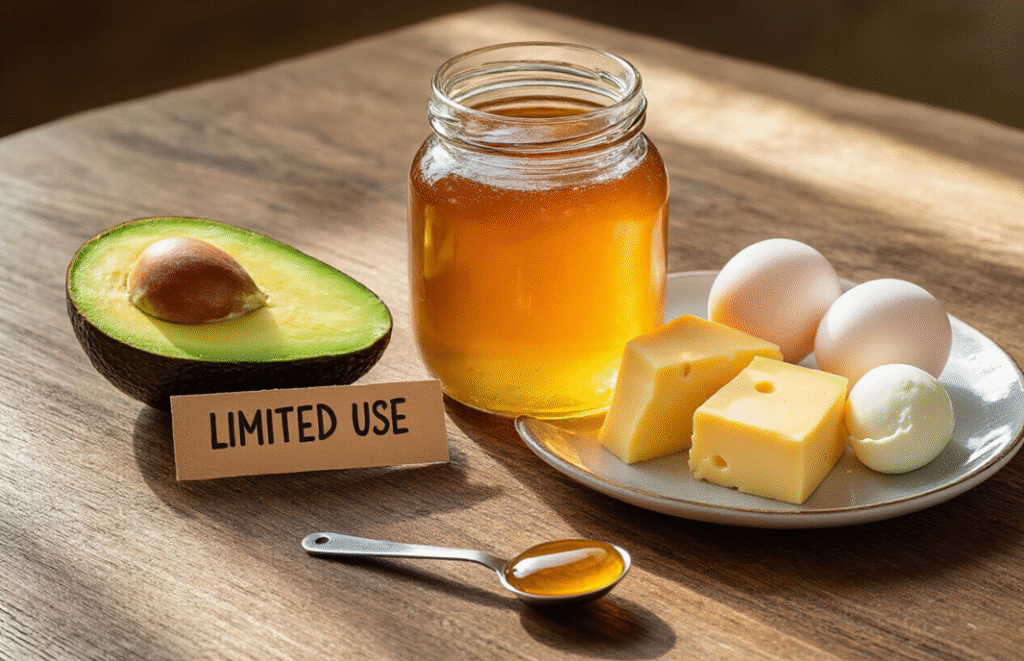
Even natural sweeteners such as honey should be considered carefully when navigating the keto diet. Although honey has a rich nutritional profile, providing antioxidants and trace minerals, it is difficult to include in a strict ketogenic lifestyle due to its high carbohydrate content. To stay in the metabolic state of ketosis, most keto followers should avoid or use honey sparingly.
Luckily, 2025 is the year of keto-friendly options that will help you indulge in your sweet tooth without compromising your low-carb diet. You can use stevia, monk fruit, allulose, or find creative solutions to incorporate small quantities of honey into your diet, but keep in mind that individual solutions are the most effective. Pay attention to your body, monitor your ketone levels, and make changes to your sweetener preferences to make your keto experience sustainable and in line with your health goals.
2 thoughts on “Is Honey on the Keto Diet? The Sweet Truth for 2025”